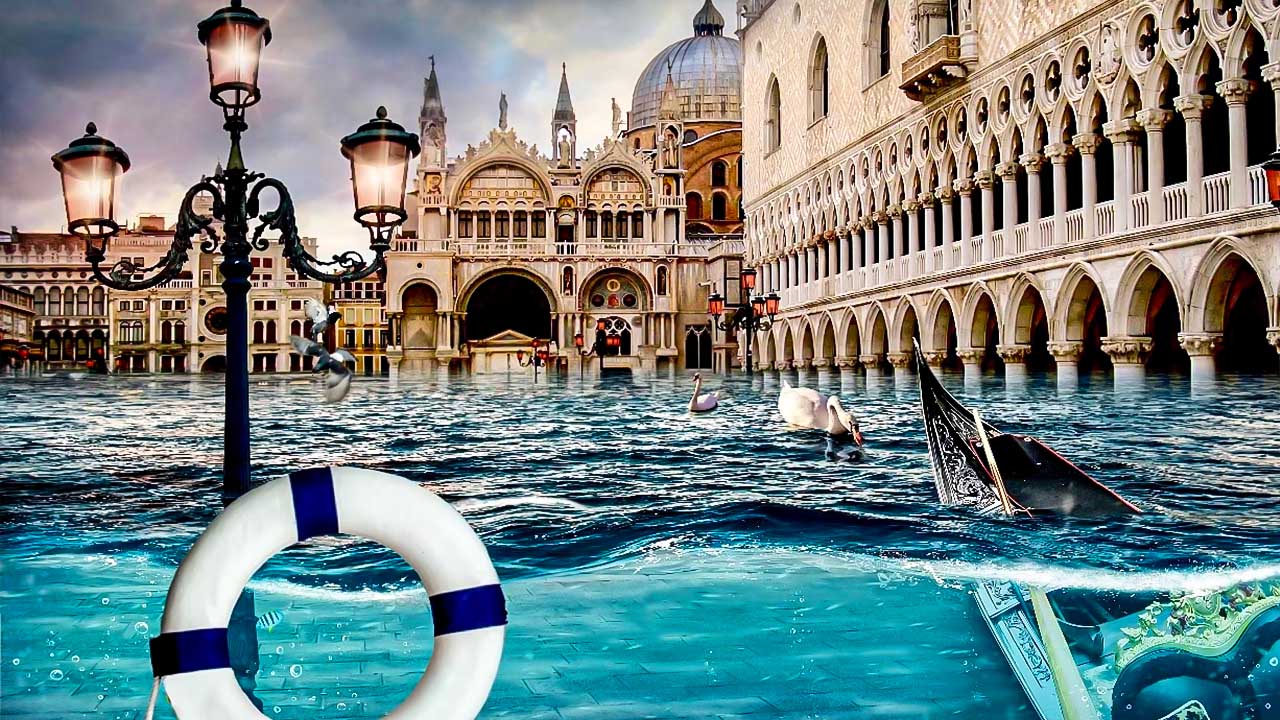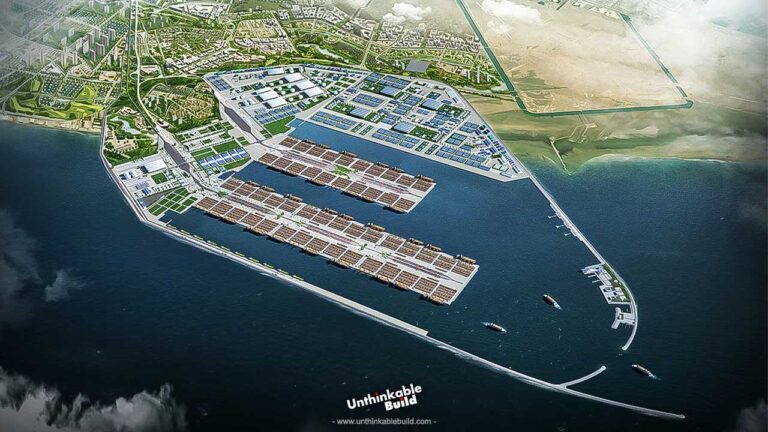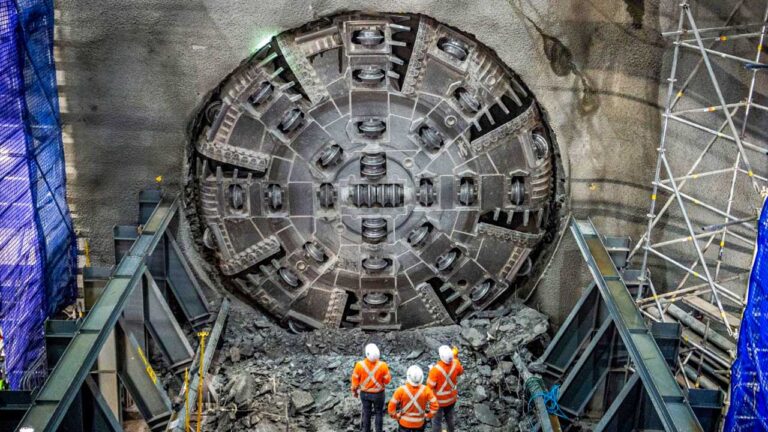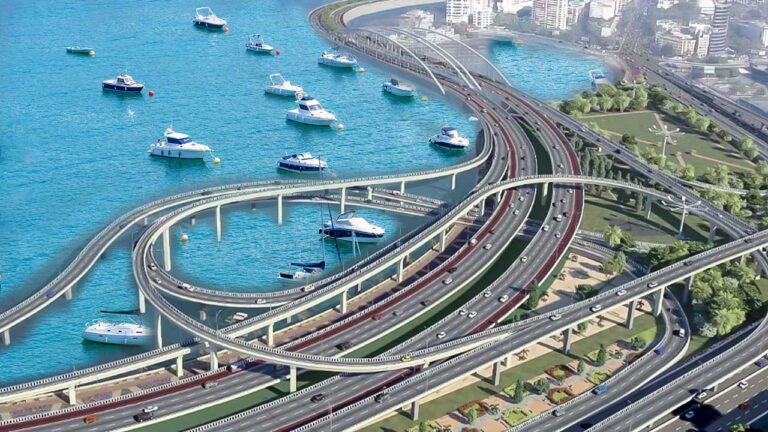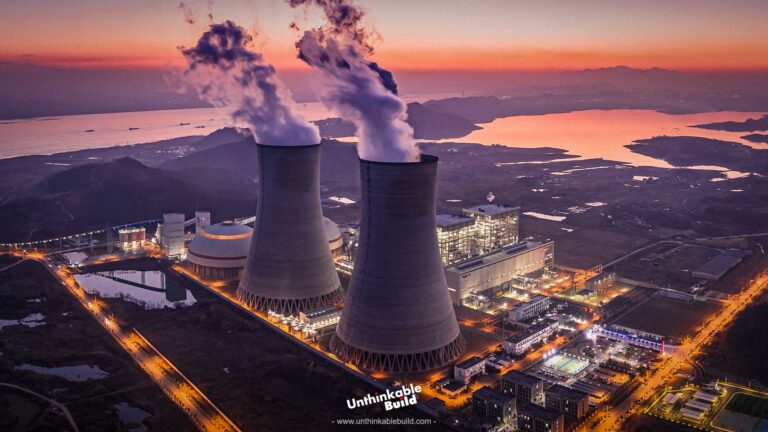MOSE Venice: The $7 Billion Flood Defense Megaproject That Failed
The historic city of Venice in Italy is one of the most famous tourist destinations in the world. Millions of tourists from all over the world visit Italy every year to see the city’s canals and architectural masterpieces.
Located in the north-east of Italy, this region consists of 18 islands that are separated from each other by 150 Canals. According to the 2020 Census, the population of this city is about 259,000 People.
While climate change has affected other parts of the world, this beautiful city of Italy has not been spared from its effects. Due to rising sea level, Venice has also been suffering from difficult conditions for the past few years. In 2022, glass walls have been installed to prevent water from reaching Venice’s 900-year-old historic church, St. Mark’s Basilica.
For the past few decades, development work has been going on a $7 Billion mega project to protect Venice from the dangers of tidal waves, which finally started working in October 3, 2020. But this project has unexpectedly failed to save a large part of the city from damages. Experts are deeply concerned about this failure, because if this situation continues, Venice will be submerged in water by the end of this century, as the buildings here will sink further into the soil and the sea level will rise due to climate changes. It is not just an idea, but the future of this city becomes clear when the high tide known as Aqua Alta often make their way here.
Although Venice has experienced these types of floods in the past, recent decades have seen an increase in their severity, with the city paying a heavy price. The city is situated on a coastal lake or lagoon with most of its foundations consisting of mud. According to historians, the early inhabitants of Venice were people expelled from various cities of the Roman Empire due to barbarian attacks, who used wood and mud to build their houses. Over time, various engineering methods were used to strengthen these structures. During the 16th and 17th centuries, this coastal lagoon turned into a swamp due to the continuous silt flowing along the rivers that reach the city.
To solve this problem, engineers diverted rivers directly to the sea. About 100 Years Later, the islands separating Venice from the Adriatic Sea were further fortified with a 10 Km Long Stone Wall to protect them from storms. After a severe flood in 1966 when Venice, Chioggia and the other areas were submerged by a tide of 194 cm, a network of 110 cm high walkways was installed in the city. Currently, to protect the city from sea floods, a controversial project called MOSE has been activated at the entrances of the coastal lake at a huge cost of $7 billion. MOSE is an Italian word and is an acronym for Modulo Sperimentale Elettromeccanico, which means Experimental Electromechanical Module. This project consists of 4 rows of mobile gates or barriers on the seabed at the three inlets of the Venetian lagoon and can be raised during high tide.
Also Read: Will Merdeka 118 Bring a New Dawn of Opportunities for Malaysia
These 78 Bright Yellow Barriers are actually 20 Meters Wide metal box-type structures, with a length of 18.5 to 29 Meters and 3.6 to 5 Meters thick. Under normal conditions these hollow barriers are full of water and remain submerged in their housing structures under the sea surface. Compressed air is injected into them when particularly high tide is predicted, as a result of which these barriers are emptied of water and raise above the sea level, preventing the flow of water from entering the Venice. This system is designed to protect the city from tides of up to 3 meters. It takes 30 Minutes to raise these barriers, while 15 Minutes are required to lower them back into their housing structures.
The hub of the project is a man-made island floating in the middle of the northernmost entry point to the Venetian lagoon. Rather than create a massive barrier of varying height, this island has been created to divide the inlet into two. It also provides a space for the main control room of the MOSE, which might otherwise disturb tourists in the Punta Sabbioni area of the Venice.
Inside the control room, a wall of monitors streams live CCTV footages of boats passing through the three channels of Venetian Lagoon. It also provides information on weather and tide levels, and monitors the yellow barriers when they are raised. One of these huge screens here monitors the water level where blue line is for the lagoon and red for Adriatic Sea.
In good weather, there are 2 people here on day shift, as well as a team of four in the tunnel, 62 Feet Below the control room. But when tides are high, this is the 24/7 hub of the whole operation, with a strong team of 100 People Operating in the control room, in the underwater tunnels, and in the lagoon. There is even accommodation where workers can sleep between shifts.
Over the past 3 years, MOSE Venice has played a significant role in stopping several floods that have previously severely damaged Venice. These floodgates also guarantee the quality of the water in the lagoon, protection of the landscape, and the maintenance of the port activity. However, this system has some drawbacks. The project was designed in 1984 and was supposed to become operational in 2010. During the additional decade from 2010 to 2020, climate prediction systems improved significantly, after which the MOSE Venice system was outdated.
This is why even today many areas of Venice are affected by flooding, such as St. Mark’s Square, which begins to look like a lake when the water level rises 80 cm above its regular level. Worryingly for businesses and historic buildings, city officials will only use the MOSE Venice system only when the water rises to 110 cm above its normal level, which brings protection for about 86% of the Venice.
Also Read: Royal Atlantis: The Building That Completely Changed the Concept of Luxury Lifestyle
On the other hand, these yellow barriers may need to be opened and closed up to 80 to 100 times a year if the threshold was lower, a frequency it isn’t equipped for yet. This is the reason why, despite this $7 Billion system, it has become compulsory to use 5 Meters Long and 1.3 Meters High Glass Walls to protect famous buildings from water in Venice. They will be used temporarily until a modern flood prevention system is put in place. These walls are capable of stopping waves up to 1.1 meters high, which is not the case for MOSE. This is not due to the loss of MOSE’s capabilities, but the costs that are incurred each time MOSE Venice is activated. Raising these barriers costs more than $320,000 each time, with energy and manpower costs being the most significant.
At least 80 people are also required to operate these machines simultaneously, as the system cannot be activated by just pressing a button. In case of bad weather, these 80 People are also forced to stay on the MOSE for 2 to 3 days as it is not possible for them to return.
In addition, 27% of Venice’s economy depends on ships that come here, including industrial, passenger and fishing vessels. When the MOSE Venice is activated, ships are blocked from entering Venice, which is detrimental to the city’s economy.
Experts say the MOSE Venice will be effective by 2050 or 2060, but that also depends on how quickly sea level rises and how often they need to close the flood gates.
According to experts, other options can also be considered to protect the city from high sea waves, such as raising the areas above sea level by pumping water into underground wells.
Some geologists have worked on similar projects, saying that Venice could be raised by 30 to 35 cm. According to data obtained at the end of the 19th century, if the city is raised by 30 cm, the average water level can be brought to zero. This means that if Venice is raised by 30 or 35 cm, you would essentially go back to the water conditions of 140 years ago.
Attempting to raise land in this way has long been considered by scientists, and the method has been used in Taipei and Tokyo to mitigate sinking. But Venice is unlikely to adopt this approach in the near future. Critics say that since the cost of Venice’s MOSE system is so high, it is unlikely to consider a plan to raise the land level for now at least.
This beautiful city’s struggle against water has been going on for centuries, and the results have often been seen in Venice’s favor. Engineers have been able to overcome several water-related problems here. But in a world that’s changing faster make us realize that billion dollar floodgates and glass walls are not enough to save the city from sinking. More needs to be done to save this fascinating historic city of Venice.

